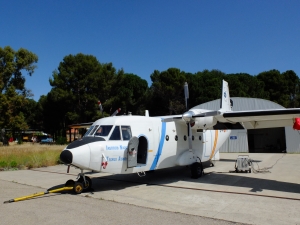The water budget of the troposphere, the bottom layer of the Earth’s atmosphere, determines the weather and plays a central role in climate change. The isotope composition of water vapor, i.e. the ratio of light and heavy water molecules, provides insight into underlying mechanisms. Climate researchers of Karlsruhe Institute of Technology (KIT) gather the data required by in-situ measurements as well as by using remote sounding instruments, e.g. on board of satellites. In a recent campaign, they combined both methods and proved the precision of remote sounding measurements for the first time.
“Water evaporation and condensation processes as well as the strong greenhouse effect of water vapor and clouds decisively influence the energy balance of the atmosphere and the entire planet,” says Matthias Schneider from the KIT Institute of Meteorology and Climate Research (IMK). “The complex water cycle has to be known better to understand our climate and to reliably estimate its development.” Global analysis requires reliable remote sounding measurements. The data measured will then help improve the reliability of climate models.
During a campaign above the sea near the Canary Island of Tenerife, the scientists conducted six measurement flights to determine the isotope composition of water vapor up to 7 km height. For this purpose, they used the ISOWAT diode laser spectrometer specially developed by IMK for use on aircraft. This spectrometer ensures a high accuracy and temporal resolution under dry as well as under humid conditions. In parallel, measurements were carried out at 2370 and 3550 m height on Tenerife in cooperation with the Spanish weather service (AEMET). Two commercial in-situ instruments and an infrared instrument of the worldwide measurement network NDACC (Network for the Detection of Atmospheric Composition Change) were applied for this purpose. In addition, the data of the infrared instrument IASI (Infrared Atmospheric Sounding Interferometer) operated on board of the METOP European weather satellite were used. The flights of the research aircraft were coordinated with the ground-based and satellite measurements.
“For this campaign, the IMK measurement methods for ground- and satellite-based remote sounding were combined with IMK’s aircraft-based in-situ measurement methods,” Matthias Schneider says. “We found good agreement between the datasets. This means that the precision of the remote sounding instruments, that is the quality of the data supplied by them, was confirmed.” For the first time, the researchers have proved that both the worldwide measurement network NDACC with its ground stations and modern weather satellites provide reliable global data for the isotope composition of tropospheric water vapor.
Better understanding of the mechanisms associated with the atmospheric water budget based on isotope composition is the objective of the MUSICA project coordinated by Schneider at IMK. MUSICA stands for “MUlti-platform remote Sensing of Isotopologues for investigating the Cycle of Atmospheric water”. MUSICA is funded with EUR 1.5 million by the European Research Council (ERC). The project has a duration of five years.
The KIT Climate and Environment Center develops strategies and technologies to secure the natural bases of life. For this purpose, 660 employees of 32 institutes produce fundamental and application-oriented knowledge relating to climate and environmental change. It is not only aimed at eliminating the causes of environmental problems, but increasingly at adapting to changed conditions.
In close partnership with society, KIT develops solutions for urgent challenges – from climate change, energy transition and sustainable use of natural resources to artificial intelligence, sovereignty and an aging population. As The University in the Helmholtz Association, KIT unites scientific excellence from insight to application-driven research under one roof – and is thus in a unique position to drive this transformation. As a University of Excellence, KIT offers its more than 10,000 employees and 22,800 students outstanding opportunities to shape a sustainable and resilient future. KIT – Science for Impact.

